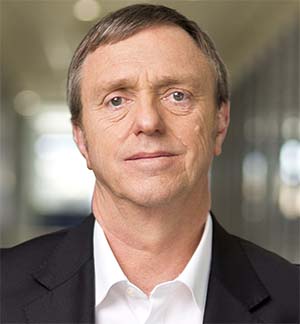“When everything seems to be going against you, remember that the airplane takes off against the wind, not with it” – Henry Ford
We certainly have headwinds in business at the moment … a tough economy, fast-rising costs, high interest rates, and unpredictable power availability, just to name a few.
 By Guy Whitcroft
By Guy Whitcroft
And, especially in IT businesses, power is a must-have. Like many small businesses, I’ve had to secure my own power supply to keep things running, so I thought I should share some thoughts based on my own experience.
It’s an investment with a reasonable ROI – During the past few years, the cost of technology has come down quite significantly. In my case, I work from home and decided to put the entire house on a solar/inverter/battery system and, based on my first 9 months of use, I’m looking at a 6-year payback period. After that, it’s clear profit. Not bad.
Preparation is key – Decide first what you’re going to protect from power outages. If you’re small enough to work from home, which areas of the house need to keep running during load shedding, and which can you do without. If you’re in your own office, you can probably take the same approach. However, if you’re in a building with multiple businesses, you’re going to have to work with the other tenants and the landlord so it could get a great deal more complicated.
Expect winter to be a time of higher load shedding than we’ve seen so far. I reckoned on managing 4,5 hour outage blocks up to three times a day, and then added 50% contingency for delays in restoring power and poor weather. My solar system is big enough to charge batteries from minimum (20% of capacity) to full in three hours of sunshine (assuming all solar power goes there – which it typically won’t as it will go to the load first). In the Cape, of course, the coldest time of year is also that with the most cloud cover.
Research and understand the technology when sizing and look for things like inverters that have an app that enables you to remotely monitor and control (changing parameters if necessary) the installation; batteries that have good warranties and recharge cycles (7 000 is a good number); and solar panels that will withstand things like hail (especially on the Highveld).
Spend time researching brands and installation companies properly, remembering the old adage: “Goedkoop is duur koop.” I’m not saying buy the most expensive, but buy well-regarded brands – and have the installation done by a company that has positive reviews, is a registered installer for that equipment, and a fully-qualified electrician. Of course, as with any other major purchase, you will want to get quotes from a few companies, but make sure all meet these criteria.
And one more thing to remember with keeping the proverbial lights on – your data and systems backup. Again, the old saying about the shoes of the cobbler’s children so often holds in IT and we forget to ensure our own data is properly backed up. I use a combination of NAS storage (mirrored) and cloud storage (Microsoft OneDrive, Dropbox, iCloud, etc.). If you use Microsoft 365 (Office), remember you get 1Tb of cloud storage with most products which should be more than enough for your files to live in the cloud. I use this for my live/current files and my NAS system for archives (and my system backups for both Windows and Mac boxes).
This combination not only means my data is secure, but my systems are too as I can switch from one to the other in a matter of minutes should I experience a problem on a PC.
Despite having grown up on a farm without electricity, I’m now absolutely dependent on it – as most people are today – and my business needs to keep going no matter what happens, so I’ve adapted my environment to suit these needs. Certainly, there are costs involved, but these are far lower than the costs of not being able to do business at all.
And something to bear in mind: Many of the world’s most successful businesses emerged from really difficult times …
